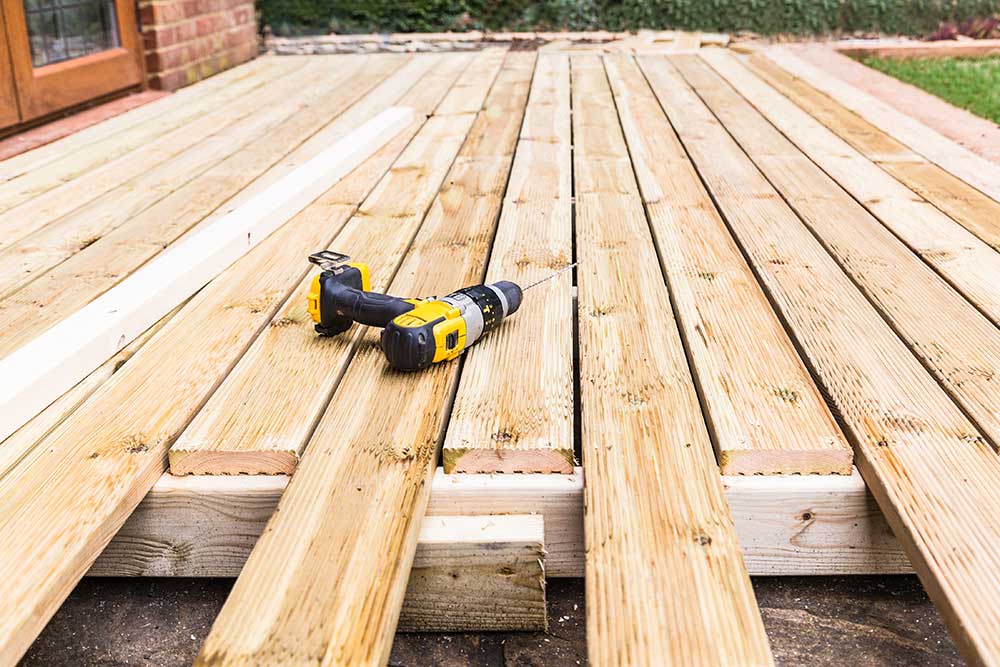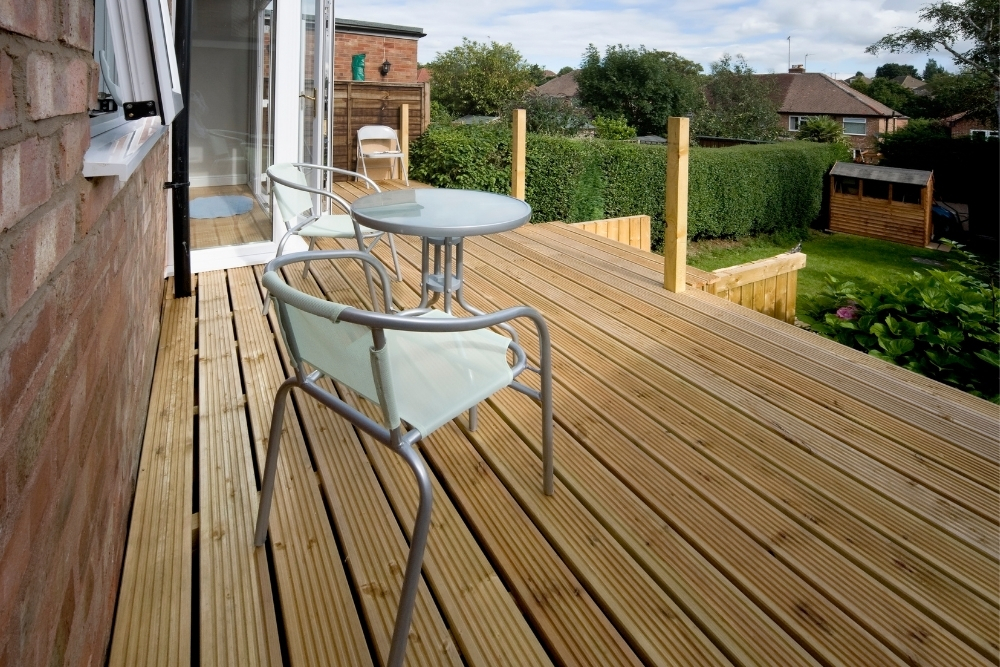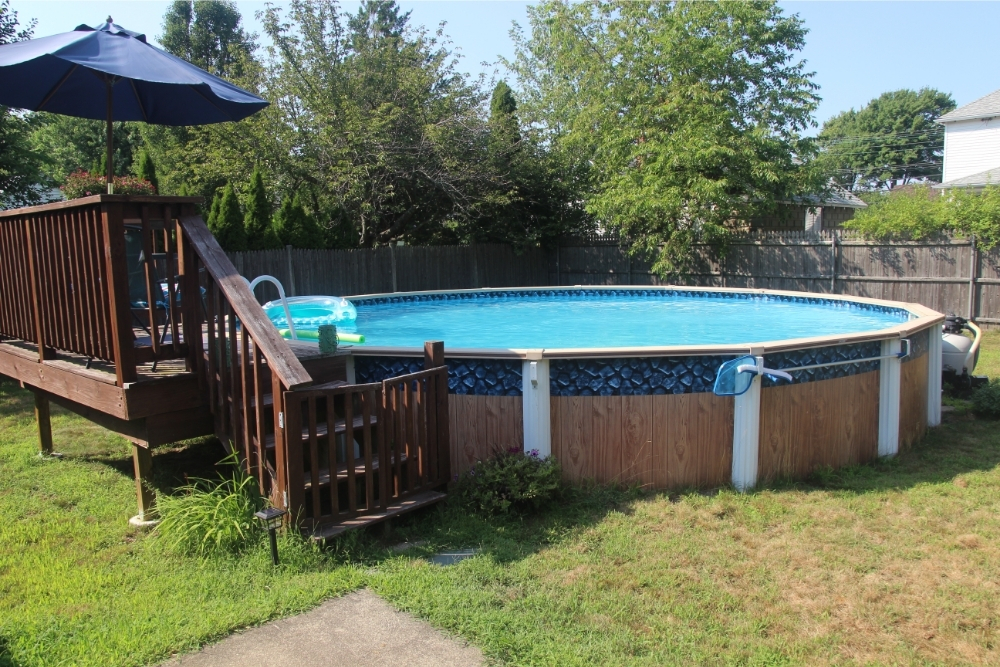Are you building your own deck and are unsure how deep the footings need to be? Perhaps you are mid-way through planning or just about to pick up the hammer and nails but have no clue how deep your footings need to be? Well, you aren’t alone!
As thousands of us flock to hardware stores with ideas of transforming our gardens into mini-paradises, we often come unstuck by the footings of our deck. We want to make sure that our deck is built correctly and is safe for use. The last thing you want is to build an uneven or dangerous deck!
You begin to panic, unsure how deep the footings should be, and it seems like no one has the answers you need. It can feel daunting and overwhelming as you venture into the decking land, especially as a first-time deck builder. You worry if you are cut out for the job.
Well, no more! Today we are here to banish your worries and get you the answers you need. Keep reading to find out how deep your deck footings need to be, and pick up some handy tips along the way!

How Deep do deck footings need to be?
Let’s get straight into it! When it comes to deck footings, there isn’t one answer that suits all, unfortunately! The depth of your deck footings depends largely on where you live and your climate. Why? Well, it’s all down to the frost lines. Have you never heard of frost lines before? That’s okay; allow us to walk you through them now.
A frost line, or freezing depth, refers to the depth groundwater in the soil will freeze. Water that penetrates the ground and soil in extreme temperatures usually seen in winter will freeze, and if you aren’t careful, it can wreak havoc on your footings!
The frost below ground level can heave structures. Decking, houses, and any structure that requires underground footings can be affected. The moisture freezing in the ground creates lens-shaped swells in the soil. As the unfrozen moisture below is drawn to cooler pockets, these swells can get bigger, causing subsidence in some cases! To prevent this from happening, you will want to set your footings with this one (on Amazon) below the frost line in your local area.
Placing them below the line means that the frost will not penetrate and disrupt your footings, ensuring that your deck remains intact. But as the climate varies dramatically across the country, it can be hard to know what your frost line is. As it’s heavily used in construction, any professional building your deck will be aware of the frost line and should place your footings below the frost line. Be sure to discuss this with them before completing the work to ensure that all the necessary precautions are being undertaken.
You can also contact your local building regulations department to find out the frost line in your local area. Before undertaking any work on your decking, you must obtain this information to ensure that your footings and deck are built correctly. But, to save you the effort of searching, we have compiled a list of all states and their frost lines! Scroll down to find your state and the average frost line that your footings should be placed below!
What is the frost line in my state?
Locate your state and find out how deep your footings need to be placed. It’s worth noting that the number provided is the frost line in inches; your footings will need to be placed below that number. So grab a measuring tape and get ready to find out how deep you need to dig to place your deck footings!
We have listed the states from the deepest frost line to the shallowest.
- Alaska – 100 inches
- Minnesota – 80 inches
- North Dakota – 75 inches
- Maine – 74 inches
- Wisconsin – 65 inches
- South Dakota – 64 inches
- Montana – 61 inches
- Vermont – 60 inches
- New Hampshire – 60 inches
- Iowa – 58 inches
- Wyoming – 56 inches
- New York – 50 inches
- Nebraska – 48 inches
- Pennsylvania – 44 inches
- Colorado – 44 inches
- Michigan – 42 inches
- Rhode Island – 38 inches
- New Jersey – 36 inches
- Indiana – 36 inches
- Illinois – 36 inches
- Connecticut – 36 inches
- Missouri – 33 inches
- West Virginia – 32 inches
- Ohio – 32 inches
- Massachusetts – 32 inches
- Kansas – 32 inches
- Delaware – 32 inches
- Idaho – 31 inches
- Utah – 30 inches
- Maryland – 30 inches
- Washington – 24 inches
- Nevada – 23 inches
- Oklahoma – 20 inches
- Virginia – 18 inches
- Oregon – 18 inches
- New Mexico – 18 inches
- Kentucky – 15 inches
- Arkansas – 14 inches
- Tennessee – 12 inches
- Texas – 10 inches
- North Carolina – 10 inches
- Arizona – 10 inches
- Mississippi – 8 inches
- Alabama – 6 inches
- Georgia – 5 inches
- California – 5 inches
- South Carolina – 4 inches
- Louisiana – 4 inches
- Hawaii – 0 inches
- Florida – 0 inches
Along with these frost lines, it’s also worth checking if any permits required for your deck from the state or Homeowners Association stipulate how deep your footings must be placed. Not all states will have special requirements, but it’s best to check before completing any work to avoid needing to make adjustments or tear the decking down at a later date if it isn’t up to code.
You can usually find this information on the permit application or acceptance, where all requirements you need to meet will be outlined. Again, if you have a professional complete the work, they are usually aware of these rules and can explain them to you if needed.
Final Word
And just like that, we have come to the end of our deck footing journey today. As you can see, the depth of your footings relates largely to your local climate and frost line. Your footings need to be below your frost line to ensure that the frost cannot penetrate and wreak havoc on your deck!
Remember to check with your local building services department to find the frost line requirements in your region, or use the average frost line in your state listed above. If you are unsure, you can always ask a professional for help. If they are based in your local area, chances are they will know the frost line and can assist you!








